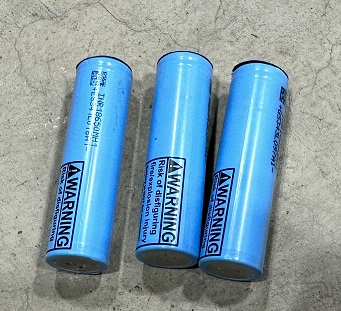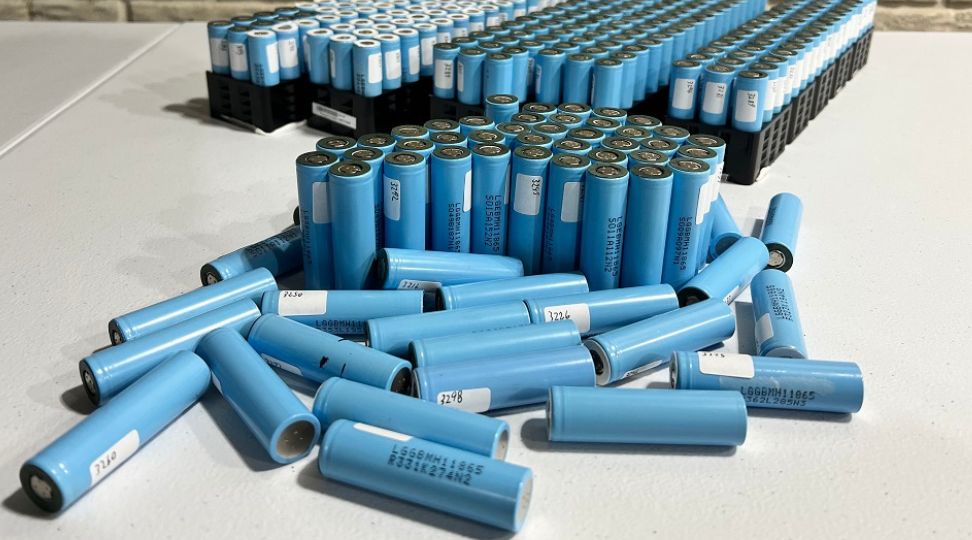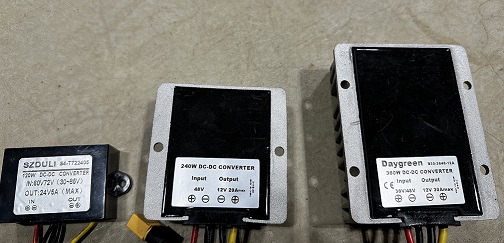
How Many 18650 Batteries Do I Need to Make 12V?
Table of Contents
Three 18650 cells are needed to make 12 volts in the most common configuration. In some cases, 4 cells can be used, but just not fully charged. Neither configuration is ideal when using NMC chemistry, which is the most common chemistry for 18650 cells.
18650 battery cells do not have a constant voltage. A typical 18650 will have a minimum voltage of about 2.5 volts and a maximum of 4.2 volts. Adding cells in series adds their voltages, so 3 fully charged NMC 18650 cells in series will produce 12.6 volts. After a short amount of runtime, however, the voltage will fall well below 12 volts.
The Issue With 3S and 4S 12v Configurations
So, How many volts is 3 18650 batteries? Connecting three 18650 cells in series, known as a 3S configuration, results in a nominal voltage of 11.1 volts (3.7V x 3), and a maximum voltage of 12.6 volts (4.2V x 3) when fully charged. While this is close to the desired 12V, the voltage range is slightly lower than it should be. Most 12-volt things will work fine around 11 and a half volts or so, but if you go much further beyond that, many devices will stop working.
On the other hand, a 4S configuration, which connects four 18650 cells in series, results in a nominal voltage of 14.8 volts (3.7V x 4), and a maximum voltage of 16.8 volts (4.2V x 4) when fully charged. This configuration provides a higher voltage than necessary, which can potentially damage equipment designed for a 12V power supply.
The 12v Compromise: The 3.5S Configuration
To solve this issue, some users opt for what can be termed a "3.5S" configuration. In this setup, four 18650 cells are connected in series, similar to a 4S configuration. However, the cells are only charged to approximately 3.7 volts each, resulting in a total voltage close to 14.8 volts when fully charged.
This practice keeps the voltage within the 12-volt range, making it a more suitable option for powering 12V devices. However, this method requires careful charging practices and specialized equipment to ensure that each cell is not overcharged, as this can lead to decreased cell lifespan or an unbalanced battery pack. It is highly recommended if you go this route to pick a good BMS to make sure it can keep the pack under control.
How Many Lithium Cells Does it Take to Make a 12V Battery?
To make a battery that is able to always provide 12 volts, you need at least 5 cells and a buck converter. This method can work well as long as the current you plan on drawing from the setup is supported by whatever buck converter you plan on using. A battery like this would always produce a clean, stable, 12-volt output that can power a wide variety of common devices.
The Best Way To Produce 12 Volts From 18650s
As long as you don't plan on pulling hundreds of amps, the best way to get 12 volts out of a lithium-ion battery made with 18650 cells is to use a 7S configuration and a buck converter. A 7S battery made from 18650 cells will have a voltage of around 24-volts which you can reduce down to 12-volts. This means that in addition to powering a 12V buck converter, you can also power a host of 24-volt devices like inverters, fans, pumps, motors, etc.
[[ aff type=aff ~ link=https://amzn.to/3AQi3R9 ~ title=`24v to 12v Buck Converter` ~ image=https://admin.cellsaviors.com/storage/24v-to-12v-buck-converter.jpg ~ description=`Easy to use 24v to 12v buck converter. A few available amperage ratings from this seller. ` ~ height=small ~ buttonText=`Check Price` ]]
With this setup, the output of the buck converter will always be 12 volts, regardless of the SoC (State of Charge) of the battery. Modern buck converters can achieve efficiencies as high as /capacity.



